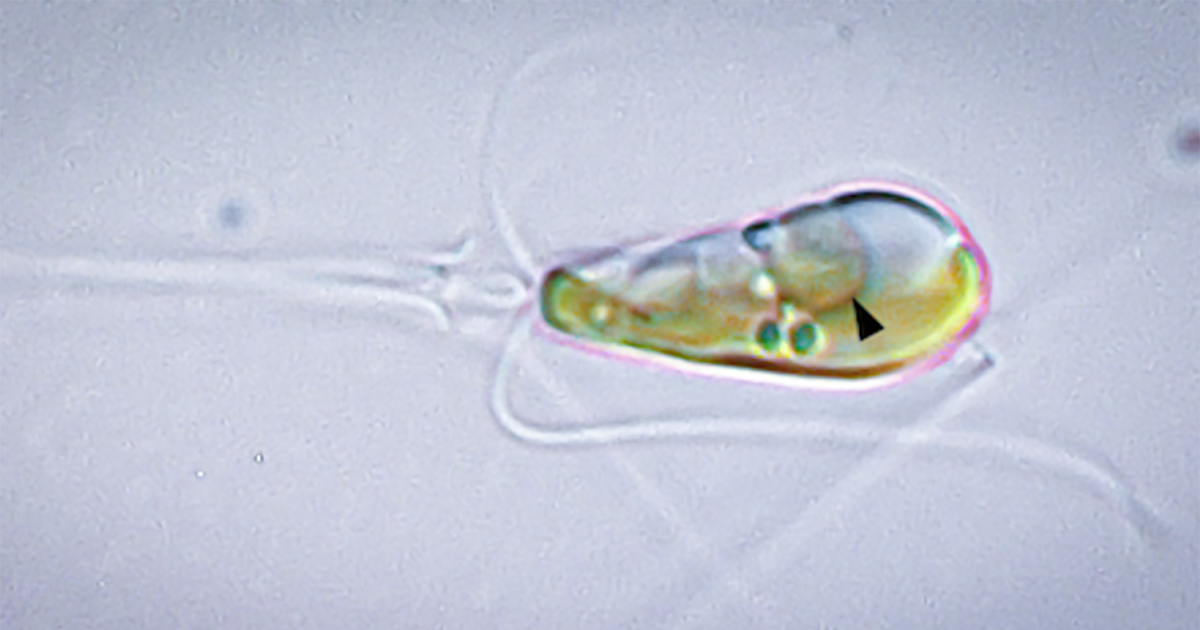From the article:
Scientists have caught a once-in-a-billion-years evolutionary event in progress, as two lifeforms have merged into one organism that boasts abilities its peers would envy. Last time this happened (1.6 billion years ago), certain advanced cells absorbed a type of bacteria that could harvest energy from sunlight. These became organelles called chloroplasts, which gave sunlight-harvesting abilities, as well as a fetching green color, to a group of lifeforms you might have heard of – plants.
And now, scientists have discovered that it’s happening again. A species of algae called Braarudosphaera bigelowii was found to have engulfed a cyanobacterium that lets them do something that algae, and plants in general, can’t normally do – “fixing” nitrogen straight from the air, and combining it with other elements to create more useful compounds.



As a layman, my interpretation is that scientists have observed a mutation in some prehistoric cells / creatures that is likely positive. In this case an algae and a bacteria somehow combined in such a way that they have become something new and better.
As an optimistic guesser it seems like this probably happens fairly often and is either unlikely to survive or replicate for long. But, having observed something that we have known about is further evidence that we understand ongoing evolution and may have a better, more sound understanding of how life came to be.
I guess that’s probably interesting because it helps us better understand what the building blocks for life are, and as we discover them on other planets or in other places in outer space we may better be equipped to understand how or if life exists outside our own world.